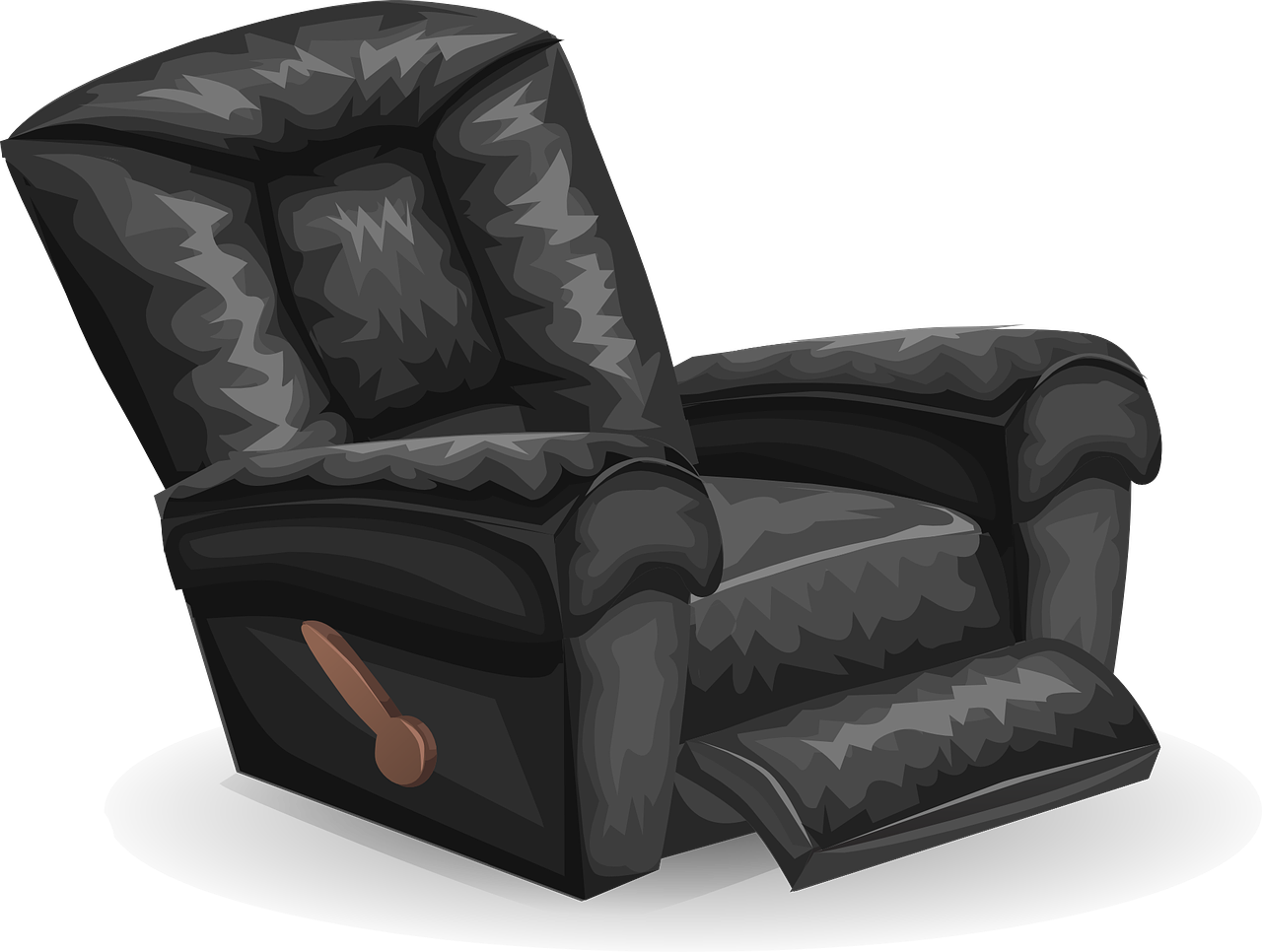Your recliner started to act weird? Perhaps, the time has come to give it some real care! Some old recliners have a “leaning” problem which is most usually due to their age and lack of periodical maintenance. But everything is fixable, so there’s no need to put up with discomfort and leave it like it is. In this article, I will tell you about some ways of fixing a leaning recliner.
First, let’s figure out possible reasons.
- The easiest problem to solve is when it’s just about the padding or recliner’s cushions that cause it to lean to one side. Then you will have to either add another padding layer or buy a new one.
- Or it may be a spring underneath it. You just have to detect its location and remove it. But watch out because if it’s a heavy-duty type of spring, it may “act aggressively” due to its high recoil. Be extremely careful to keep your fingers safe.
Whatever the part, if it’s broken – it needs to be replaced. Check the user manual to find out about the correct parts for replacement.
- The third possible reason may be screws or fasteners that need to be tightened or replaced. The whole framework may suffer and cause your recliner to lean if some parts are missing. And sometimes it’s just about the contact points between the wooden/metal parts of the recliner and the screws that got loose. You can use some wooden filings of the correct size and fill the spaces with them for a tight lock with the screws.
- Bent reclining mechanism. This one is serious. It’s when your recliner’s mechanism starts leaning to one side and the chair is going to be the next. Sometimes it’s also a linkage mechanism that leans to one side.
- Sometimes, it’s just a poor quality frame or engineering (built out of square) that result in malfunctioning.
- It may even be the wrong uneven spot on your floor that causes your recliner to look “sleepy.” Use a level to check if this is the cause.
But 90 % of problems are really easy to deal with and you can have your recliner good as new, using some basic tools and knowledge or replacing 1-2 parts, e.g. a spring or screw. And in the first case, tightening screws and nuts shouldn’t be a problem.
You will need:
Screwdriver (to unlock joints and panels);
Lubricate oil (for joints of the mechanism or to rejoin broken wooden panels);
Newspaper (to prevent oil spill);
Wood glue or plastic wood putty (to lubricate creaky joints);
Pry bar (thick metal rod).
What to do
- Unlock the wooden panel along with the footrest.
- Lift your recliner and turn it upside down.
- Use a screwdriver to unscrew all the screws and remember where you put them. Make sure they are in a safe place (plastic bags are a great idea) because you are going to need them again.
- Take photos of every part you unscrew if you doubt you will have it in the right place later.
- Take off the upholstery to see the whole frame.
- See anything that needs to be fixed?
- Most often it’s just about joints and springs that need to be oiled or fastened. If that’s the case, place an old newspaper under the part to avoid any oil stains on the floor. Spray some oil on the spring/joint.
- Make sure that all the springs are firmly attached to the frame. Be careful when you work near them and make sure you don’t release tension from the coils.
- After each step, don’t forget to get rid of the excess oil with a soft cloth.
- Tighten all loose joints with a screwdriver if there is a need.
- A damaged or worn wooden panel can be fixed with wood glue or a metal brace (to hold the construction together). If it’s broken, you will, of course, have to buy a new one. Sometimes, the screws in the panel may get worn as well. You will have to fill the holes with the glue to provide secure attachment.
According to ReclinerFAQ, If your recliner has a different kind of structure, say, the reclining mechanism mounts with the help of an iron hook, you will need a pry bar to force heavy-duty springs back into their correct position. With time these tight springs may get bent or become displaced, and you will have to force them back where they were.
If it’s metal frame, there may be a mounting plate with all the nuts and screws attached to it. If it’s worn or bent, you may need to replace it with a new one.
You may also check your recliner for a couple of thumbwheels with adjustable recliner tension. Sometimes it’s the unevenness in the tension of the right and left springs. Rotate the wheels (wing nuts) to adjust the equal tension. You can sturdy pliers if it’s too tight to turn with your fingers.
Conclusion
Don’t rush to throw your old recliner away and buy a new one. Remember how happy you were when you first took a sit in it? It’s a history now, don’t erase these memories and show some respect to your favorite recliner! It must mean something to you.
It’s not a big deal – the construction is pretty simple most of the times and you will understand it once you take a look at the mechanism and structure. Attentiveness, a few basic tools, and a small amount of repairing skill are quite enough to make your recliner live again!
Plus, most often it’s way cheaper to fix it at home on your own than replacing the whole set. Just pay attention to it, use gently, and keep the mechanism oiled to make sure the condition is always great. Keep your chair in good shape and save your money, time, and nerves!
Author’s bio: Benjamin Taylor shares the best of the DIY and decorating tips that he can, and tries to get as many friends as possible! He loves networking with other decorating professionals to expand his knowledge and try some new techniques.
Add The Sports Daily to your Google News Feed!







